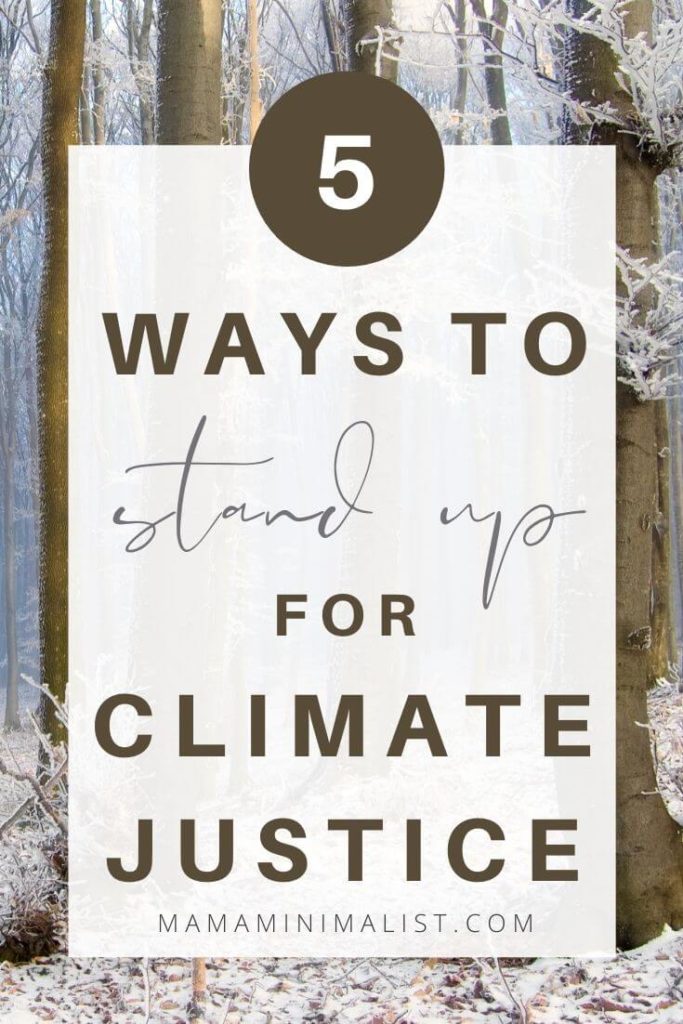5 Ways to Stand Up for Environmental Justice
Environmental injustice is racial injustice.
Environmental injustice happens every day, and it happens all over the globe. Worse, it rarely receives the media attention it deserves.
In the United States, African Americans are more likely to live near toxic waste facilities and breathe polluted air. Their communities are less likely to receive adequate protection to prevent disasters and – when disasters do occur – they are less likely to receive an immediate, comprehensive response.
Countless instances of environmental injustice occur all over the globe, too:
It happens in India, Bangladesh, and China when textile plants pollute the areas around their factories.
Environmental injustice occurs in East Asia when America ships its trash and recycling there and therefore makes our garbage their problem.
Razing indigenous lands to make room for grazing cattle is environmental injustice, too.
Environmental justice is a movement that believes all people should bear the brunt of climate issues equally.
Environmental injustice in Flint
Flint, Michigan is a recent illustration of what often happens to communities of color in America.
Flint is a predominately black community that came into the national spotlight in 2015 because its residents had been drinking water contaminated with lead. (Lead is a neurotoxin can cause brain and nervous system damage.)
Even though the media began covering Flint at the tail end of 2015, the reality is residents’ plight started two years prior – 2013 – when the black community voiced concerns about their drinking water.
For two entire years government officials assured residents their drinking water was safe, even though it wasn’t.
Flint made nationwide news when public health officials determined the residents of Flint had been drinking and bathing in water contaminated with lead levels several thousand times higher than the federal maximum.
The saddest part? Local officials simply failed to use the legally mandated water treatments that would have kept their water clean.
9,000 children under the age of six in Flint have been exposed to water tainted with lead and are at a high risk for neurological damage.
Environmental racism is the government’s severely delayed response. It is the media’s original ambivalence in covering Flint’s plight until it was too late, too.
You can find The Sustainable Minimalists podcast wherever you listen to podcasts.
Apple Podcasts | Google Podcasts | Spotify | Stitcher
How does environmental injustice happen?
Environmental injustice is systemic and occurs with and without the conscious effort of governmental bodies.
It is local, too: Because wealthier white citizens often have the money and the political power to protect their own interests, white neighborhoods rarely find themselves next to hazardous waste facilities.
Communities of color, then, are forced to take on the landfills, industrial complexes, and other environmentally-dangerous sites.
The history of the environmental justice movement
Communities of color have taken on an unequal share of environmental risks. The environmental justice movement seeks to remedy that.
Prior to 1982, the civil rights movement and the environmental rights movement were their own entities. Because the environmental movement focused largely on preserving beautiful outdoor areas and mostly ignored urban areas, it had a reputation for being exclusive to whites.
But civil rights and environmental rights collided in 1982 in Warren County, North Carolina when an electrical transformer manufacturer dumped tons of cancer-causing polychlorinated biphenyl along 240 miles of highway.
When it came time for the clean up, the North Carolina government chose Warren – a small, predominantly black county – to put all the toxic waste.
Warren’s residents protested the state’s plans for 6 weeks. Police arrested 500 people.
The protests were unsuccessful – North Carolina eventually dumped the toxic soil Warren County anyway – but the protests attracted national attention. For the first time the American public became more aware of environmental issues facing communities of color.
A broader environmental justice movement emerged not long after.
Climate justice
Although climate change disproportionally impacts people of color, climate justice occurs when whites and non-whites bare equal brunt of climate change’s effects.
The poster-child example of climate injustice is Hurricane Katrina.
While it is impossible to say with 100 percent certainty that climate change created Katrina, it is well documented that higher sea levels and warming oceans create stronger hurricanes.
2005’s Katrina – a Category 5 storm – hit the primarily African-American neighborhoods of New Orleans hardest. Over 80 percent of the homes lost belonged to African-American residents.
But why?
In the years before Katrina hit, most federal money to strengthen the city’s levees went to strengthening the levees on the white side of town.
And then when it came to rebuilding the city after Katrina, the first building plans slated white areas for immediate redevelopment. The plans largely ignored the black communities that were hit the hardest.
As the effects of climate change become more evident, climate injustice will become more pronounced.
Ways you and I can fight for environmental justice
Sustainable minimalism is about advocating for environmental justice for all communities and all people across all races, all classes, and all geographies.
The good news is that many of the ways we can take a stand against racism are also powerful ways to combat environmental racism, including:
– Protesting peacefully.
– Signing petitions.
– Donating to civil rights causes as well as environmental organizations that desperately need your funding if you are able. Some noteworthy organizations include:
- The Marshall Project (inclusive media coverage)
- Black Lives Matter Global Network (policy reform)
- Mutual Aid (community restoration)
– Keep listening.
Pay special attention to what is happening in marginalized communities near you.
– Keep reading.
One of the most troubling aspects of environmental injustice is that instances don’t get the attention of the mainstream media until something really, really terrible happens.
But environmental injustice happens every single day. Don’t wait for the mainstream media to tell you it’s happening. Seek it out, instead.
– Join the conversation.
Silence is complacency. It’s on you and me to call out blatant and subtle racism when we see it.




